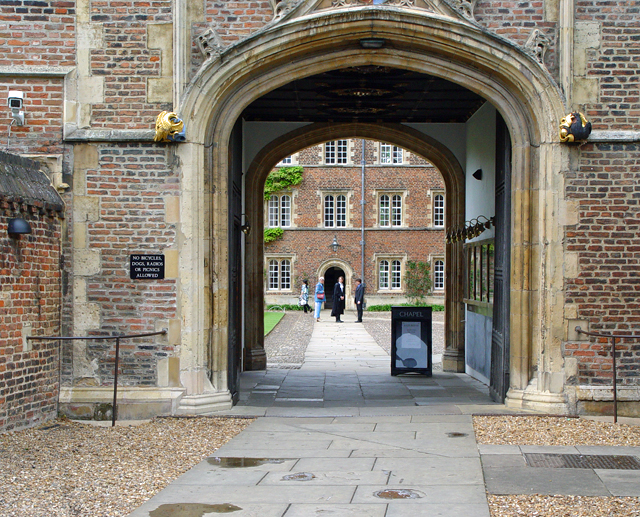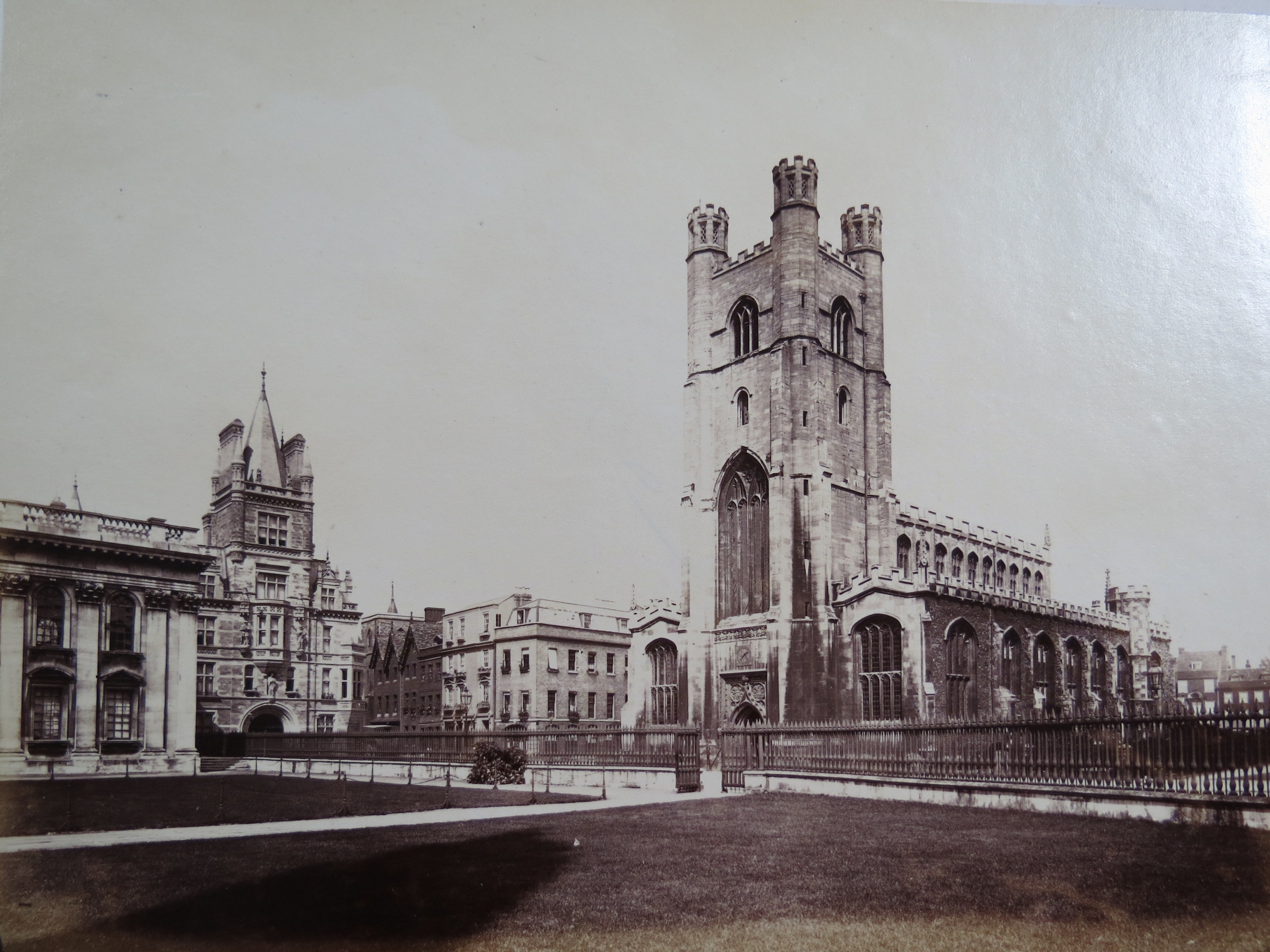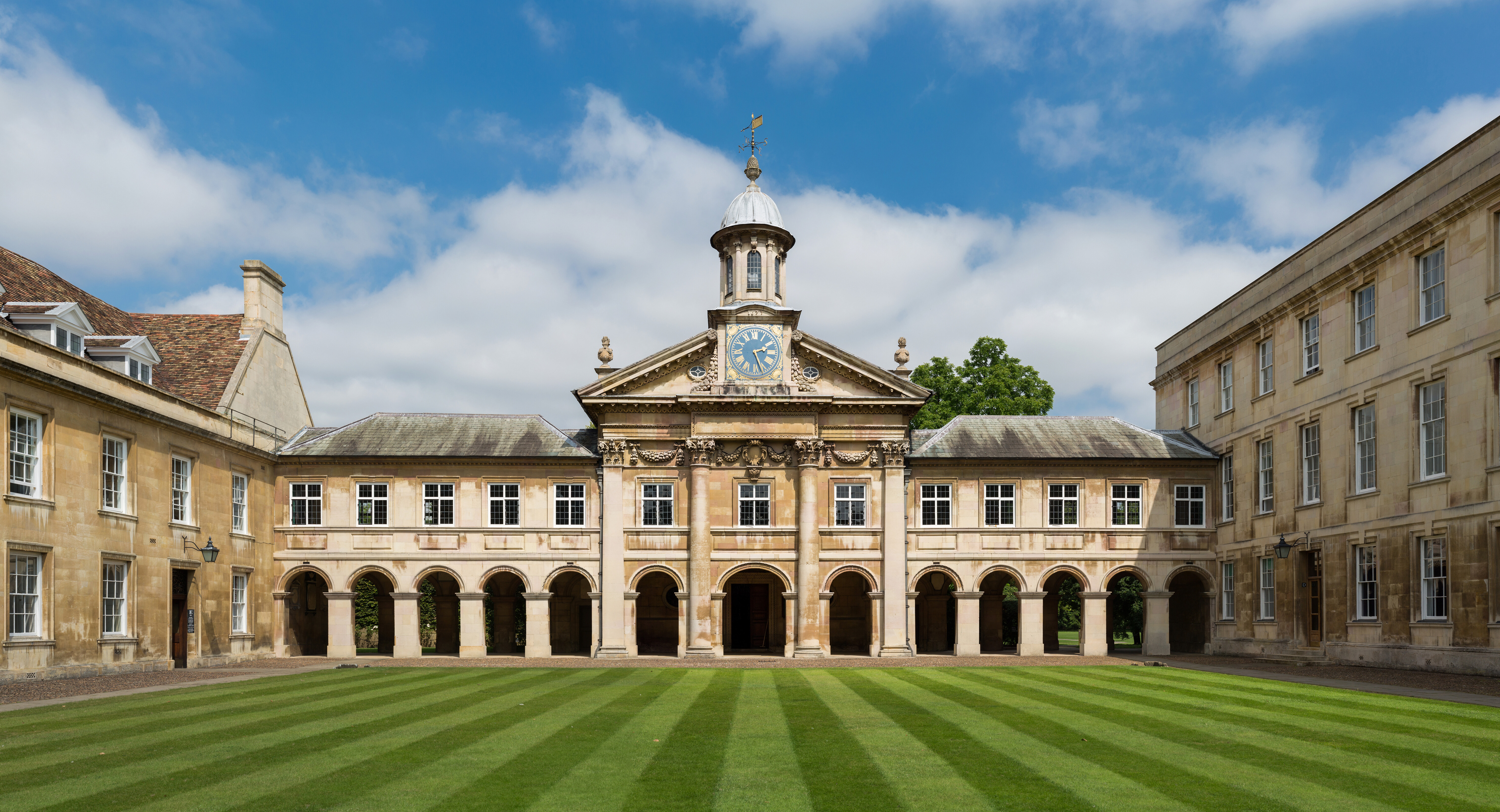|
Alexander Nairne
Alexander Nairne (1862–1936) was a Canon of Windsor from 1921 to 1936 and Regius Professor of Divinity at Cambridge.'Canon Nairne', The Times, 16 March 1936 Career He was educated at Jesus College, Cambridge, and graduated DD in 1914. He was appointed: *Assistant curate of Great St Mary's, Cambridge 1887 - 1889 *Assistant Master at Harrow School 1890 - 1892 *Assistant curate at Hadleigh, Suffolk 1892 - 1894 *Rector of Tewin 1894 - 1912 *Professor Hebrew and Old Testament Exegesis, King’s College, London 1900 - 1917 *Vicar of All Saints Church, Cambridge 1917 - 1919 *Dean of Jesus College, Cambridge 1917 *Canon of Chester Cathedral 1914 - 1922 * Regius Professor of Divinity at Cambridge 1922 - 1932 He was appointed to the eleventh stall in St George's Chapel, Windsor Castle St George's Chapel at Windsor Castle in England is a castle chapel built in the late-medieval Perpendicular Gothic style. It is both a Royal Peculiar (a church under the direct jurisdiction of the ... [...More Info...] [...Related Items...] OR: [Wikipedia] [Google] [Baidu] |
Dean And Canons Of Windsor
The Dean and Canons of Windsor are the ecclesiastical body of St George's Chapel at Windsor Castle. Foundation The college of canons was established in 1348 by Letters Patent of King Edward III. It was formally constituted on the feast of St Andrew the Apostle, 30 November 1352, when the statutes drawn up by William Edington, bishop of Winchester, as papal delegate, were solemnly delivered to William Mugge, the warden of the college. Accepting that the process of foundation took several years to complete, the college takes the year 1348 as its formal date of foundation. Costume Three ancient monumental brasses survive depicting canons of Windsor, wearing the mantle of the Order of the Garter, purple in colour, with a circular badge on the left shoulder, displaying: ''Argent, a cross gules'' (a Saint George's Cross): #c. 1370. Roger Parkers, North Stoke, Oxfordshire (half effigy with inscription; head lost). #1540. Roger Lupton, LL.D., Provost of Eton College and Canon of ... [...More Info...] [...Related Items...] OR: [Wikipedia] [Google] [Baidu] |
Jesus College, Cambridge
Jesus College is a constituent college of the University of Cambridge. The college's full name is The College of the Blessed Virgin Mary, Saint John the Evangelist and the glorious Virgin Saint Radegund, near Cambridge. Its common name comes from the name of its chapel, Jesus Chapel. Jesus College was established in 1496 on the site of the twelfth-century Benedictine nunnery of St Mary and St Radegund by John Alcock, then Bishop of Ely. The cockerel is the symbol of Jesus College, after the surname of its founder. For the 300 years from 1560 to 1860, Jesus College was primarily a training college for Church of England clergy. Jesus College has assets of approximately £344m making it Cambridge's fourth-wealthiest college. The college is known for its particularly expansive grounds which include its sporting fields and for its close proximity to its boathouse. Three members of Jesus College have received a Nobel Prize. Two fellows of the college have been appointed to the ... [...More Info...] [...Related Items...] OR: [Wikipedia] [Google] [Baidu] |
Great St Mary's, Cambridge
St Mary the Great is a Church of England parish and university church at the north end of King's Parade in central Cambridge, England. It is known locally as Great St Mary's or simply GSM to distinguish it from " Little St Mary's". It is one of the Greater Churches. It is designated by Historic England as a Grade I listed building. In addition to being a parish church in the Diocese of Ely, it is the university church for the University of Cambridge. As such it has a minor role in the university's legislation: for example, university officers must live within 20 miles of Great St Mary's and undergraduates within three. The church also hosts the "University Sermons" and houses the University Organ and the University Clock. The latter chimes the "Cambridge Quarters" which were later used by the clock tower of the Houses of Parliament ("Big Ben"). History The first mention of the church is a record of King John presenting Thomas de Chimeleye to the rectory in 1205. Th ... [...More Info...] [...Related Items...] OR: [Wikipedia] [Google] [Baidu] |
Harrow School
Harrow School () is a Public school (United Kingdom), public school (English Independent school (United Kingdom), independent boarding school for boys) in Harrow on the Hill, Greater London, England. The school was founded in 1572 by John Lyon (school founder), John Lyon, a local landowner and farmer, under a Royal Charter of Queen Elizabeth I. The school has an enrolment of about 820 boys, all of whom boarding school, board full-time, in twelve boarding houses. It is one of the Public Schools Act 1868, original nine public schools listed in the 1868 parliament act. Harrow's uniform includes morning dress, morning suits, Boater, straw boater hats, top hats and walking stick, canes. Its list of distinguished alumni includes seven former Prime minister, British Prime Ministers: George Hamilton-Gordon, 4th Earl of Aberdeen, Aberdeen, Spencer Perceval, Perceval, F. J. Robinson, 1st Viscount Goderich, Goderich, Robert Peel, Peel, Henry John Temple, 3rd Viscount Palmerston, Palmerston ... [...More Info...] [...Related Items...] OR: [Wikipedia] [Google] [Baidu] |
All Saints Church, Cambridge
All Saints' is a church on Jesus Lane in central Cambridge, England, which was built by the architect George Frederick Bodley. The church was constructed in stages between 1863 and 1870 and is a notable example of English Gothic Revival style. It was designated Grade I listed building status in 1950. It was vested in the Churches Conservation Trust in 1981. Opening times vary and visitors should contact the Churches Conservation Trust to confirm current arrangements. History All Saints in the Jewry A mediæval church stood in St John's Street, Cambridge. This was known as All Saints in the Jewry, and previously as All Saints by the Hospital (due to its proximity to the Hospital of St John the Evangelist). This was to distinguish it from the other All Saints' Church in Cambridge at the time, All Saints by the Castle, now demolished. By the 13th century, the church was in the patronage of St Radegund's Nunnery, later re-established as Jesus College. The church was rebuilt ... [...More Info...] [...Related Items...] OR: [Wikipedia] [Google] [Baidu] |
St George's Chapel, Windsor Castle
St George's Chapel at Windsor Castle in England is a castle chapel built in the late-medieval Perpendicular Gothic style. It is both a Royal Peculiar (a church under the direct jurisdiction of the monarch) and the Chapel of the Order of the Garter. St George's Chapel was founded in the 14th century by King Edward III and extensively enlarged in the late 15th century. It is located in the Lower Ward of the castle. The castle has belonged to the monarchy for almost 1,000 years and was a principal residence of Elizabeth II before her death. The chapel has been the scene of many royal services, weddings and burials – in the 19th century, St George's Chapel and the nearby Frogmore Gardens superseded Westminster Abbey as the chosen burial place for the British royal family. The running of the chapel is the responsibility of the dean and Canons of Windsor who make up the College of Saint George. They are assisted by a clerk, verger and other staff. The Society of the Friends ... [...More Info...] [...Related Items...] OR: [Wikipedia] [Google] [Baidu] |
Vincent Henry Stanton
Vincent Henry Stanton (1 June 1846 – 8 June 1924) was Regius Professor of Divinity at Cambridge University. He is buried in the Ascension Parish Burial Ground, Cambridge, Parish of the Ascension Burial Ground in Cambridge; he was a member of the Cambridge Apostles intellectual secret society. References * ‘STANTON, Rev. Vincent Henry’, Who Was Who, A & C Black, an imprint of Bloomsbury Publishing plc, 1920–2008; online edn, Oxford University Press, Dec 200accessed 8 March 2013 External links * 1846 births 1924 deaths Alumni of Trinity College, Cambridge Fellows of Trinity College, Cambridge Regius Professors of Divinity (University of Cambridge) British theologians Ely Professors of Divinity {{UK-theologian-stub ... [...More Info...] [...Related Items...] OR: [Wikipedia] [Google] [Baidu] |
University Of Cambridge
, mottoeng = Literal: From here, light and sacred draughts. Non literal: From this place, we gain enlightenment and precious knowledge. , established = , other_name = The Chancellor, Masters and Scholars of the University of Cambridge , type = Public research university , endowment = £7.121 billion (including colleges) , budget = £2.308 billion (excluding colleges) , chancellor = The Lord Sainsbury of Turville , vice_chancellor = Anthony Freeling , students = 24,450 (2020) , undergrad = 12,850 (2020) , postgrad = 11,600 (2020) , city = Cambridge , country = England , campus_type = , sporting_affiliations = The Sporting Blue , colours = Cambridge Blue , website = , logo = University of Cambridge log ... [...More Info...] [...Related Items...] OR: [Wikipedia] [Google] [Baidu] |
Charles E
Charles is a masculine given name predominantly found in English and French speaking countries. It is from the French form ''Charles'' of the Proto-Germanic name (in runic alphabet) or ''*karilaz'' (in Latin alphabet), whose meaning was "free man". The Old English descendant of this word was '' Ċearl'' or ''Ċeorl'', as the name of King Cearl of Mercia, that disappeared after the Norman conquest of England. The name was notably borne by Charlemagne (Charles the Great), and was at the time Latinized as ''Karolus'' (as in '' Vita Karoli Magni''), later also as '' Carolus''. Some Germanic languages, for example Dutch and German, have retained the word in two separate senses. In the particular case of Dutch, ''Karel'' refers to the given name, whereas the noun ''kerel'' means "a bloke, fellow, man". Etymology The name's etymology is a Common Germanic noun ''*karilaz'' meaning "free man", which survives in English as churl (< Old English ''ċeorl''), which developed its ... [...More Info...] [...Related Items...] OR: [Wikipedia] [Google] [Baidu] |
1875 Births
Events January–March * January 1 – The Midland Railway of England abolishes the Second Class passenger category, leaving First Class and Third Class. Other British railway companies follow Midland's lead during the rest of the year (Third Class is renamed Second Class in 1956). * January 5 – The Palais Garnier, one of the most famous opera houses in the world, is inaugurated in Paris. * January 12 – Guangxu Emperor, Guangxu becomes the 11th Qing Dynasty Emperor of China at the age of 3, in succession to his cousin. * January 14 – The newly proclaimed King Alfonso XII of Spain (Queen Isabella II's son) arrives in Spain to restore the monarchy during the Third Carlist War. * February 3 – Third Carlist War – Battle of Lácar: Carlist commander Torcuato Mendiri, Torcuato Mendíri secures a brilliant victory, when he surprises and routs a Government force under General Enrique Bargés at Lácar, east of Estella, nearly capturing newly cr ... [...More Info...] [...Related Items...] OR: [Wikipedia] [Google] [Baidu] |
1936 Deaths
Events January–February * January 20 – George V of the United Kingdom and the British Dominions and Emperor of India, dies at his Sandringham Estate. The Prince of Wales succeeds to the throne of the United Kingdom as King Edward VIII. * January 28 – Britain's King George V state funeral takes place in London and Windsor. He is buried at St George's Chapel, Windsor Castle * February 4 – Radium E (bismuth-210) becomes the first radioactive element to be made synthetically. * February 6 – The IV Olympic Winter Games open in Garmisch-Partenkirchen, Germany. * February 10– 19 – Second Italo-Ethiopian War: Battle of Amba Aradam – Italian forces gain a decisive tactical victory, effectively neutralizing the army of the Ethiopian Empire. * February 16 – 1936 Spanish general election: The left-wing Popular Front coalition takes a majority. * February 26 – February 26 Incident (二・二六事件, ''Niniroku Jiken''): The Impe ... [...More Info...] [...Related Items...] OR: [Wikipedia] [Google] [Baidu] |






